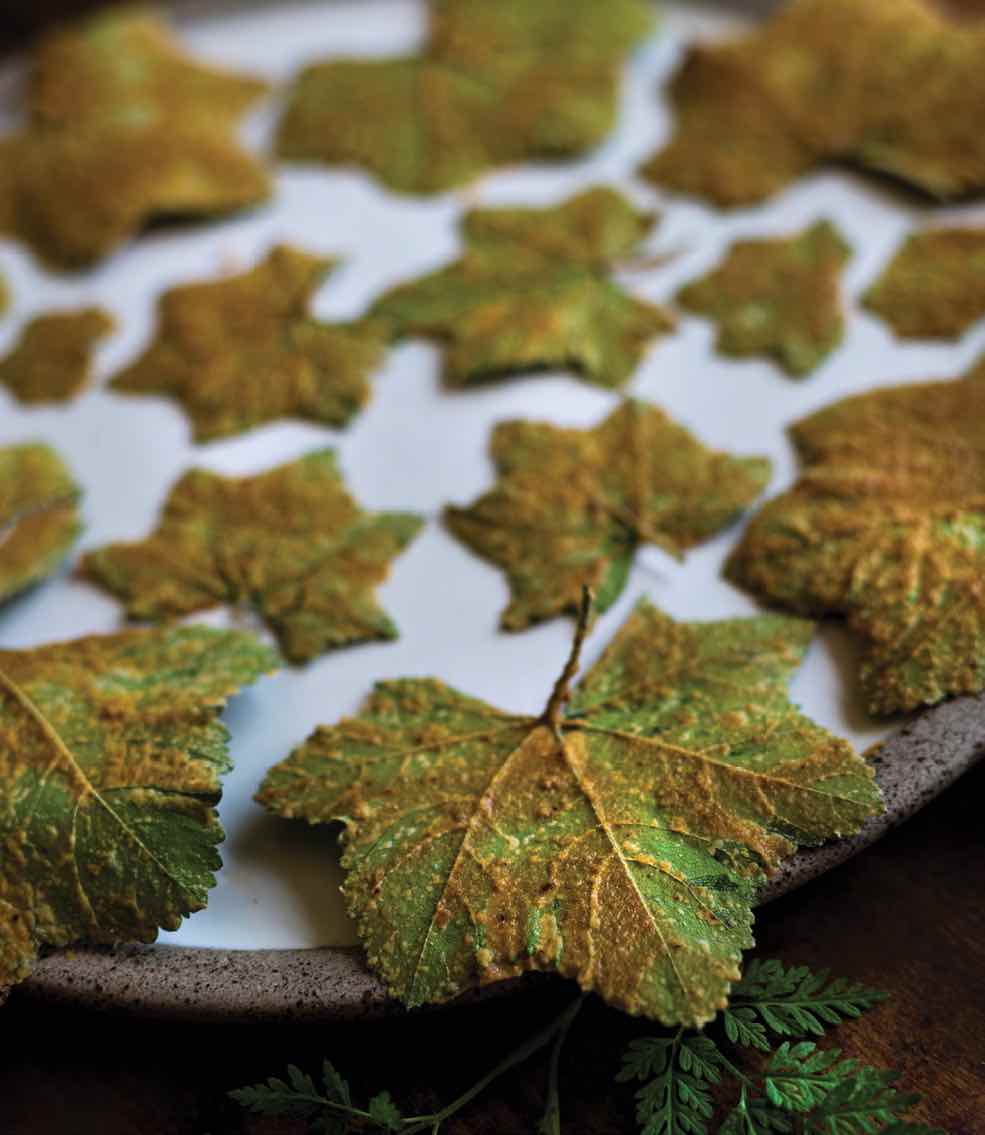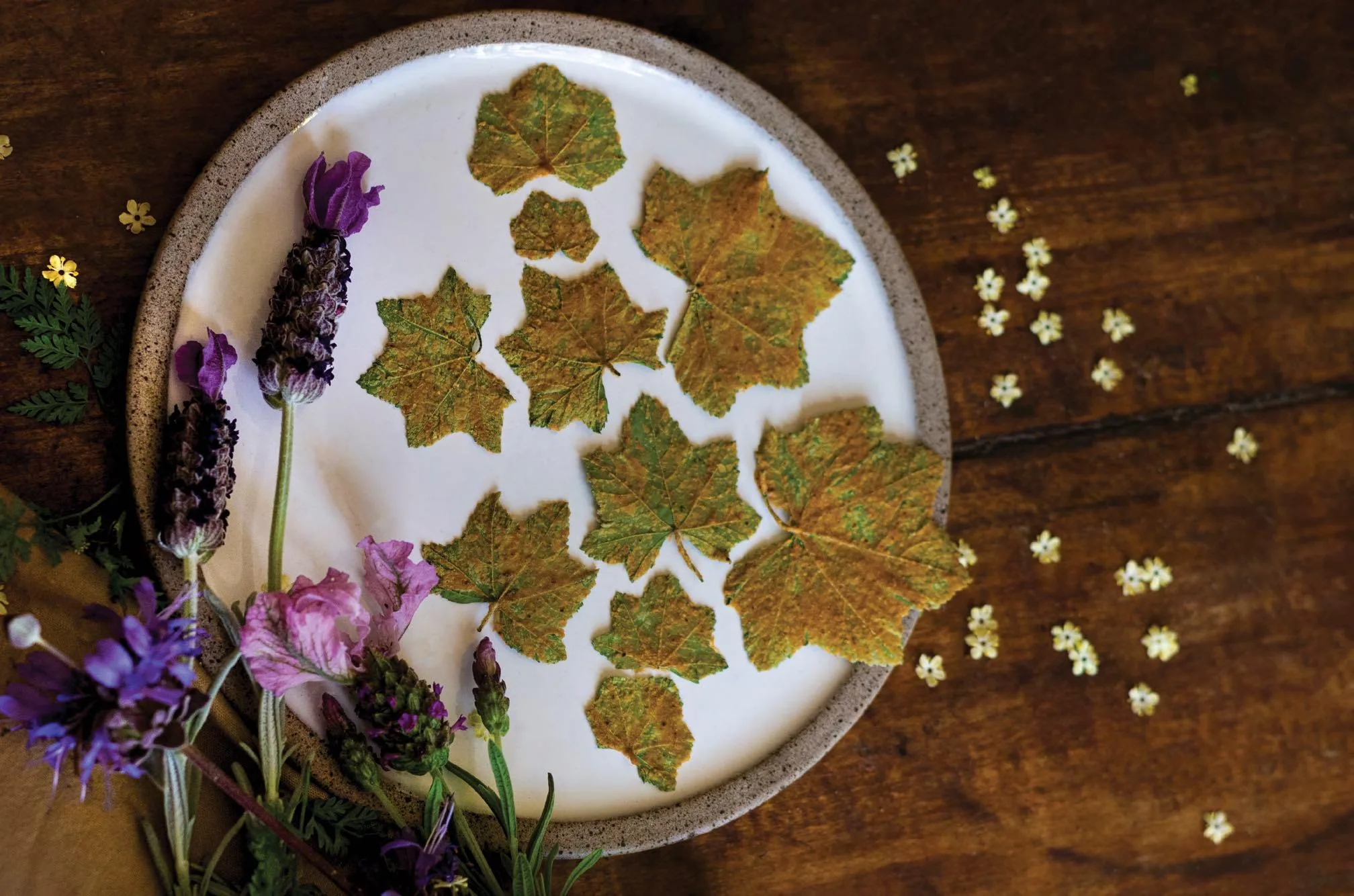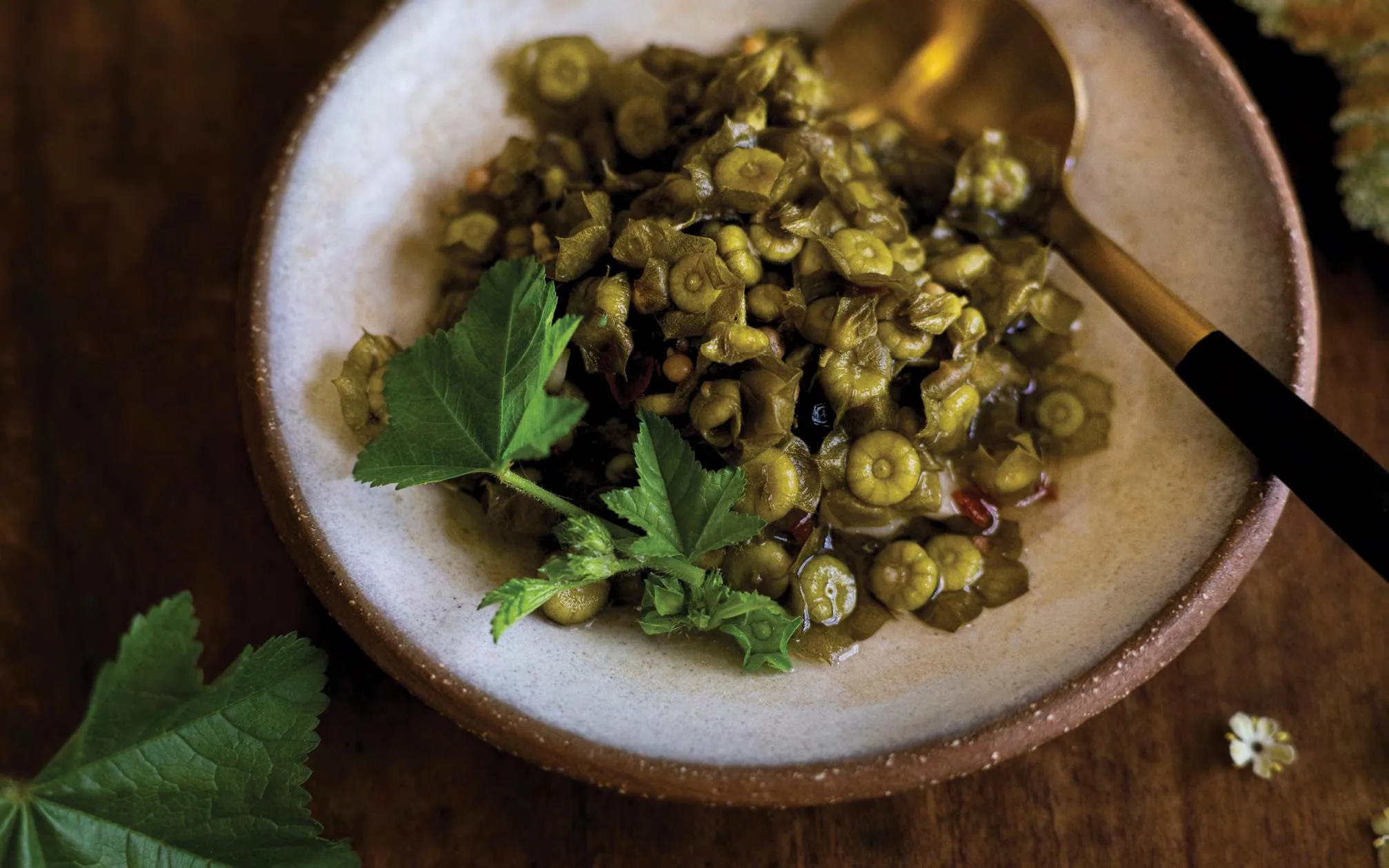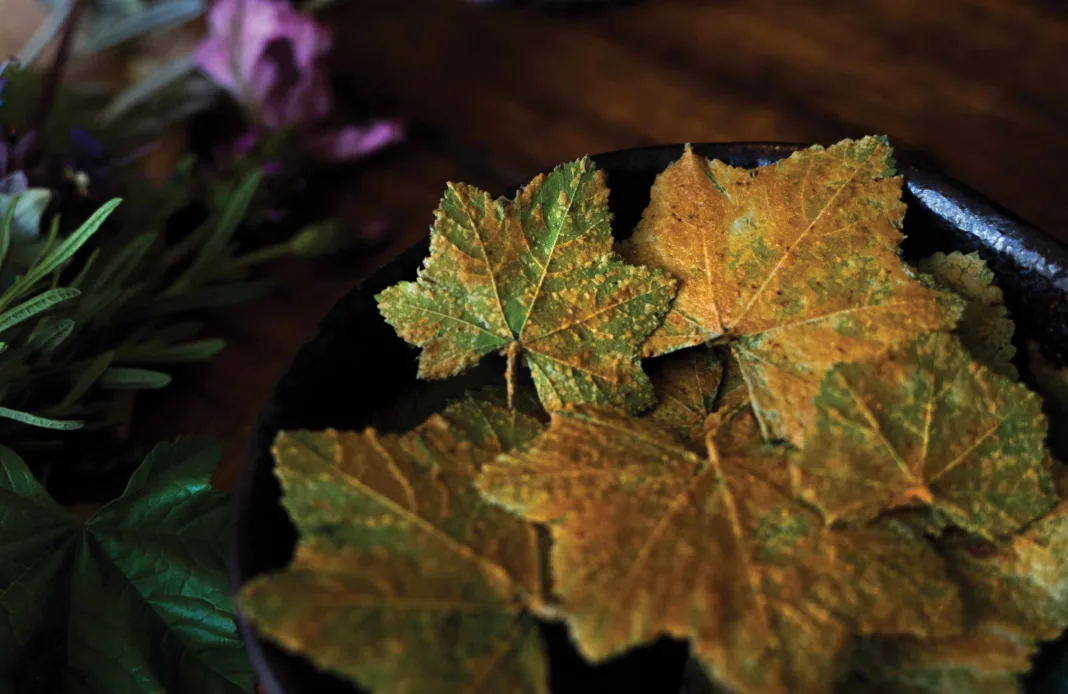With the abundance of summer energy comes the abundance of weeds in the garden. Instead of fighting them, why not eat them? One of the mildest and easiest-to-identify weeds is the common garden mallow (Malva neglecta and Malva parviflora). A related species in this family of plants, Althaea officinalis, was originally used to make the sweet treat marshmallows. Despite their edible and culinary uses, they often are not desirable in the garden.
How to Identify
Round, palmate leaves that resemble geranium, with a toothed margin. Mallow family plants have a red spot at the cleft where the stem meets the leaf. The small, sometimes inconspicuous flowers produce a seed head that is segmented like a cheese wheel, each seed being wedge-shaped when pulled apart. Mallow is also known as “cheese weed” because of these seeds. This plant is widely common across the U.S.
When to Harvest
Spring and early summer. Collect younger leaves for fresh salads, and older leaves for making chips or thickening soups, broths, and sauces. Seed pods are best collected when still young and green before they harden into mature brown seeds.
Preparation and Uses
Use fresh in salads. Large leaves can be used as mini tortilla-like wraps or stuffed like grape leaves. Batter and dehydrate large leaves to make mallow chips.
Use cooked with other greens or in soups and stews to help create a thicker texture. Its mucilaginous quality means it can be used like its relative, okra.
The green seedpod “cheese wheels” can be eaten raw while they are still young or pickled. They add a nice texture to salads.


SPICY MALLOW CHIPS
1-2 pounds fresh mallow leaves, the largest you can find
½ cup tahini or cashew butter
¼ cup tamari, soy sauce, or Bragg’s liquid aminos
¼ cup nutritional yeast
2 teaspoons garlic powder
1 teaspoon smoked paprika
½ teaspoon chipotle or cayenne (optional)
1 to 2 lemons, juiced
Wash the leaves and pat dry. I sometimes leave a few inches of the stems attached for aesthetic reasons and to move them while coating.
Mix all the ingredients for the seasoning. If it’s too thick or paste-like, thin with about a quarter to a half cup of spring water. Taste, and adjust spices if necessary.
Coat each leaf generously with the seasoning mixture. Place each leaf separately onto dehydrator trays and dehydrate at 120°F for 4 to 6 hours or until crispy. If you do not have access to a food dehydrator, an oven on the lowest setting can be used instead.
This recipe also works well with other weedy leaves such as dandelion (Taraxacum officinalis), stinging nettle (Urtica sp.), sow thistle (Sonchus sp.), and many other possibilities.
QUICK PICKLED CHEESE WEED CAPERS
½ cup cheese weed seed pods, immature
¾ cup rice vinegar
¼ cup water
1 teaspoon salt
3 to 4 garlic cloves, sliced
½ teaspoon chili flakes
½ teaspoon black peppercorns
¼ teaspoon mustard seeds
Rinse the cheese-weed seed pods—lightly, as they can fall apart with any vigorous washing—and set aside.
Combine the rice vinegar, water, and salt in a small saucepan and bring to a boil, stirring to dissolve the salt.
In a clean mason jar, add the cleaned seed pods and remaining ingredients. Pour the hot liquid ingredients over the seed pods and close the lid. Shake gently to mix everything together. Make sure that the seed pods are completely submerged in the liquid.
Allow the seed pods to marinate for at least a day to infuse the flavors. Serve as a garnish for charcuterie, cheese, salads or anywhere you would use a pickled ingredient. These cheese-weed capers keep fresh in the refrigerator for up to two weeks.
Follow Jess Starwood on Instagram @jess.starwood.






























 Enchanted Living is a quarterly print magazine that celebrates all things enchanted.
Enchanted Living is a quarterly print magazine that celebrates all things enchanted. 



